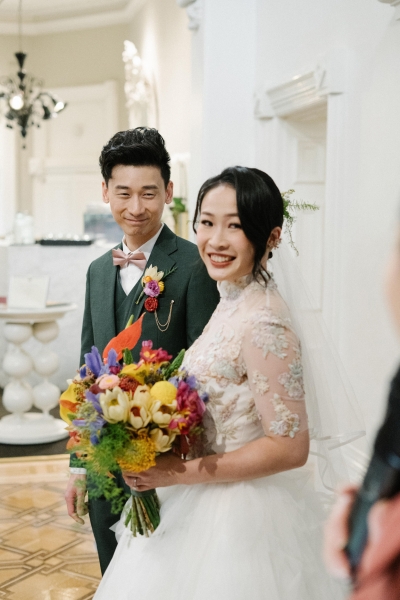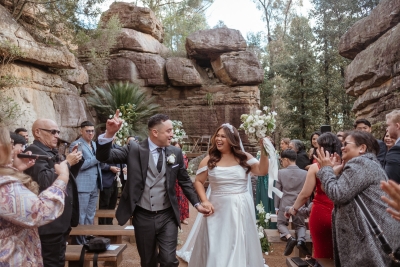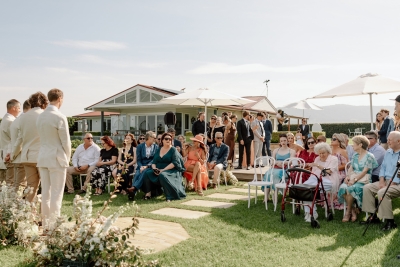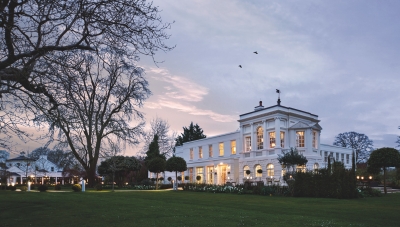Note from Ms Polka Dot : If you’ve been reading Polka Dot Bride for awhile, you’ll know I rarely, if ever use writers other than myself. Today though, I want to introduce you to the newest Polka Dot Bride team member Ms Gingham. Ms Gingham is our new content manager and is working with all of our wonderful contributors and editing posts for our specialty titles. So you can find her in the footer of each entry on Polka Dot Groom, Polka Dot Wisdom, Polka Dot Made, Polka Dot Weddings, and Polka Dot Honeymoons. (pssh If you’d like to register to be a contributor simply click here and she’ll send you more information)
Ms Gingham is the sassiest lady you will meet and always has us bursting into giggles with her commentary. She’s also had us jealous of the wonderful traditions of her Greek heritage (it is now on my bucket list to get Ms Gingham to teach me how to Zorba dance and make the best saganaki in the world..two of my favourite things) and thus suggested & written the first in what will be a long series of posts on multicultural weddings. Help us give her a wonderfully warm welcome!
Photo from Athena and Dariusz’s Wedding by Marcus Bell of Studio Impressions
If you are of the Greek Orthodox faith, then a wedding ceremony is a whole different ball game to, say, a civil ceremony in the park. The priest will be chanting a lot, he’ll give you some wine to drink (hooray!) and he’ll put some “crowns” on your heads and make you walk around a table. At the end of the ceremony the result is still the same … you are married. But have you ever wondered what significance the crowns have in the ceremony? I know I have, so here it is.
As with many of the church’s ceremonies, the traditions and rituals in a Greek Orthodox wedding service have followed us from Ancient times. The crowns that are used today in the modern Greek Orthodox wedding service originate in Ancient Greece and have been carried through by the Greek Orthodox church.
A little history … In ancient Greece, the bride would leave her parent’s home in a horse or oxen drawn carriage. She would sit between the groom and the best man (the best man drove the carriage), as they made their way to the groom’s residence. The bride was dressed in her finest and she had spent the morning indulging in a bathing ritual. In addition to this, the couple wore crowns made from various plants devoted to Aphrodite such as olive branches, vines leaves and lemon blossoms. In other parts of Greece, the crowns were made from Asparagus. The ancient Greeks who followed this custom believed that as Asparagus is grown out of thorns and hard dirt, thus the union of the two will create beauty and fertility.
There were no photographers in Ancient Greece! The famous Francois Vase depicts an ancient wedding procession.
There was a bridal procession which accompanied the bridal party and all those involved wore the same crowns. The air was celebratory and jubilant. The whole bridal procession wore white to symbolize purity. Not so much the purity of the body but that of their relationship. Later on, with the arrival of Christianity did the wearing of white come to symbolize virginity. Interestingly, in Ancient Greece, a woman was married at around fifteen whereas a man was around thirty as this was the age that he would have completed his military service. To think that in these days you could be thrown in jail for this!
In the Byzantine (9th – 13th century), the crowns became symbols of royalty. The ceremony of marriage became a coronation service and so the tradition stands today.
Byzantine wedding crowns. Image from the Byzantine Museum
Today the crowns are often made of silver or gold. They are a sign of the bond between the Bride and Groom and represent the glory and honour which God bestows upon the couple who have observed His Commandments. The couple is crowned as King and Queen of their new family and ordered to rule with justice and integrity. The priest places the crowns (which are tied together by a long ribbon) on the heads of the bride and groom and the “koumbaro” or best man exchanges the crowns three times.
Modern Greek wedding “stefana” (crowns). Crowns by Lena Septembri
Another significant moment in the Greek Wedding Ceremony is the removal of the crowns. In the past, the bride and groom were required to wear their crowns for a full week after the ceremony and then return for the removal in a different ceremony. That could prove to be interesting on the honeymoon … thankfully we are not required to do this in Modern ceremonies!
Photo from Athena and Dariusz’s Wedding by Marcus Bell of Studio Impressions
The Greek Orthodox faith is rich in rituals, customs and ceremonies which brings a very different feel and essence to the wedding ceremony. So there you have it! A brief history of the significance of the Crown in the Greek Orthodox wedding service. So next time you’re invited to a Greek wedding, you can astound the little old ladies at the wedding with your knowledge of their culture. Maybe they’ll make you some baklava in return!
References: Greek Orthodox Archdiocese of Australia














Amazing ideas, tips, pictures!!!
I relay like the idea about making your own paper to create something unique, the great tips about the wedding cake and the ceremony as whole.
http://www.wedding-planning-secret.com/
Thank you for this insight into the Greek ceremony. I look forward to adding a traditional Stefana to my new collection of head pieces.
Warm wishes,
K R I S T I N H I L L
Bridal couture headpiece designer